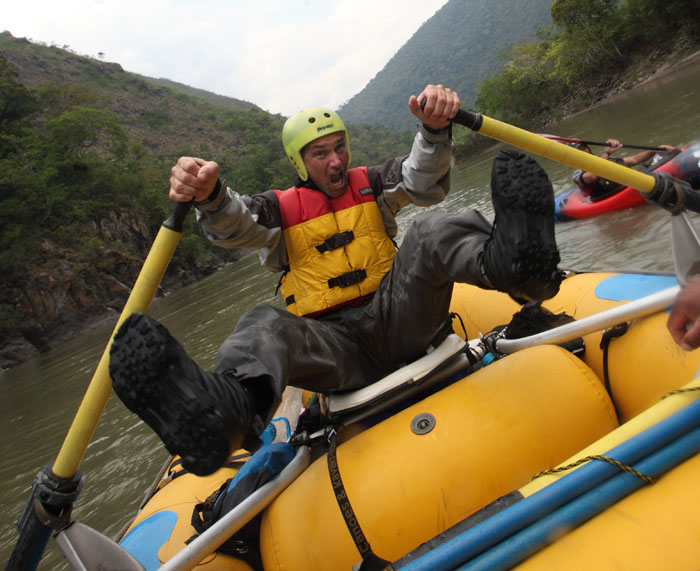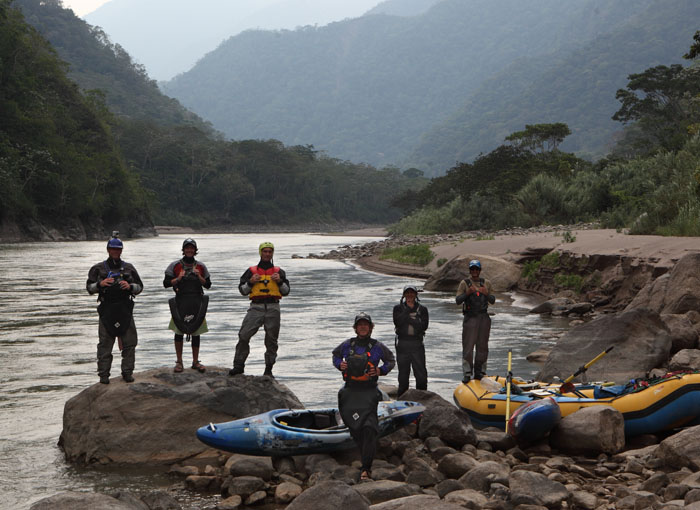Collecting Data from Source to Sea Down the Amazon River: the Ultimate Adventure Science Combo
The team was enjoying the beautiful bright moon rising over the Amazon River. Today, they enjoyed no wind at all. The water was flat and the weather muggy. The team drank a lot more water due to the hot, muggy weather conditions. They are enjoying the channel. It’s a very nice change from the previous 3800+ miles. They paddled 50.8 miles today. In Texas, that would be a drop in the bucket. In the Amazon, it’s a 12.5 hour tough day. The weather, flat water, river traffic and school buses all slowed them down.
The school buses are actually larger river boats with a small dugout canoe tied up along side it. When they reach a bus stop, the canoe (which has a small motor) will untie, go pick up the kids at the end of the dock, motor them back over to the larger boat, the kids climb into the larger boat and continue their way down the river. The larger boat never stops. In addition, the team saw a small dugout canoe with a couple of small, young girls (7-9 yrs old) paddling a smaller dugout canoe with wooden paddles about a 1/2 mile across the river to get to their bus stop. Now, I cannot imagine my 9 year old paddling a dugout canoe on her way to school down the Amazon River. Of course, it’s a way of life for these young ladies. West stopped and got pictures, of course. Can’t wait to see those.
Today, the team ran across a German couple that spoke English. They were motoring up the river in a 45′ galvanized metal sailboat. The couple was about the same age as the two older guys on the team. Very nice looking, enjoying their travels. They sailed across the ocean and then have been making their way up the Amazon River. They gave the team three cold beer. Key word is “cold”. None of them really wanted it but the cold taste was good going down. The team shared it with the crew.
Our guys are enjoying large lunches and dinners. The support boat motors up a head, scouts the place for the tie-up, talks to the locals and gets permission, they prepare dinner while our guys clean up and change clothes. Once changed, our guys enjoy dinner, writes in their journals, make phone calls and then bed. They are collecting data and samples for the Adventurers and Scientists for Conservation every day and notes have to be made. This is a big part of their expedition and West says they are noting things daily. On the boat, West informed me they are sleeping on the roof, in their tents. Both tents fit on top and there aren’t any mosquitos up there. Now, in the boat, it’s a little trickier. There are cockroaches, ants and mosquitos. West says it’s not just the boat, it’s the way things are (as normal) on the Amazon. Ants…ok. Mosquitos…expected. Cockroaches…no way. Inside the boat, the ceiling height is about 5’6″, a little short for the taller one of our group. He stays out as much as possible.
About our Captain, Beto. He’s a river man. This is his life. He travels up and down the river, hauling cargo, people, animals, or whatever needs to be delivered. West says Captain Beto knows what he is doing. He gets along with everyone and has been invaluable to the team. Hopefully, we can talk him into traveling to the mouth of the Amazon instead of stopping in Belem. We’d like him to continue along with the group so Sheila (Jeff’s girl) and Gabriel (Jeff’s grandson) can ride along, take many pictures of the team at the finish and then motor the team and their boats back down to Belem. If not Beto, then it will be someone else.
–Barbara


